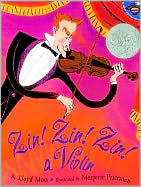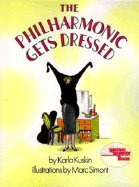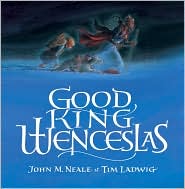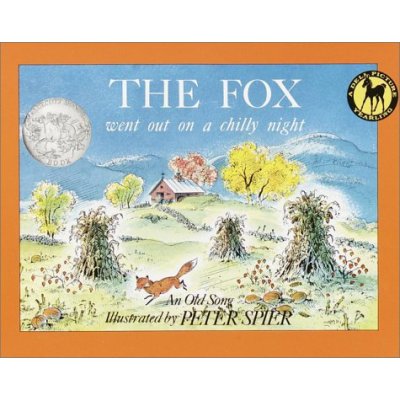Leo and I went to the Kennedy Center on Sunday to see (and hear) an NSO Ensemble program for families called Connections: MORE Math and Music (reviewed in the Washington Post today, 1/8/08). The program was a good fit (maybe a little advanced) for Leo, who likes math and is just starting his second year of violin.
We also re-read two of our favorite picture books about music with Milly, who stayed home with her dad. Surprise! Both of them are also in some way about math, although I wouldn't have thought of either of them if asked to recommend a math-related picture book.
Caldecott Honor winner Zin! Zin! Zin! a Violin by Lloyd Moss, illustrated by Marjorie Priceman (Simon and Schuster, 1995) is also counting book: it starts with a trombone playing alone (solo) and adds orchestral instruments one by one (duo, trio, etc.) until it has "a chamber group of ten." Moss's well-written rhyming verses are perfectly attuned to the isntruments they introduce. And Priceman's illustrations, done in gouache, contribute an energetic and colorful cast of musicians.
And in The Philharmonic Gets Dressed by Karla Kuskin, with illustrations by Marc Simont (HarperCollins, 1982), 105 members of the Philharmonic Orchestra (92 men and 13 women) get dressed for work. Kuskin's quiet, precise text tells us how many take showers or baths (or bubblebaths); how many of the men stand up or sit down to get into their pants; etc. I think Simont's spot illustrations of the various members of the orchestra are delightful, too.


Oh, and another thing these two books have in common: great last lines. But I can't quote them here, because you have to read the book first!

